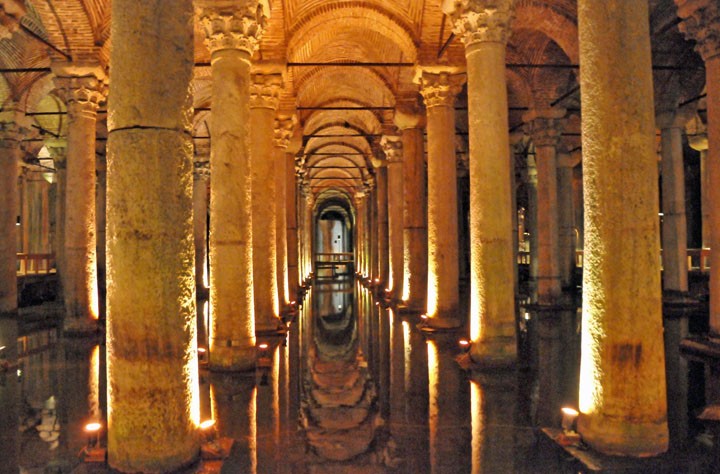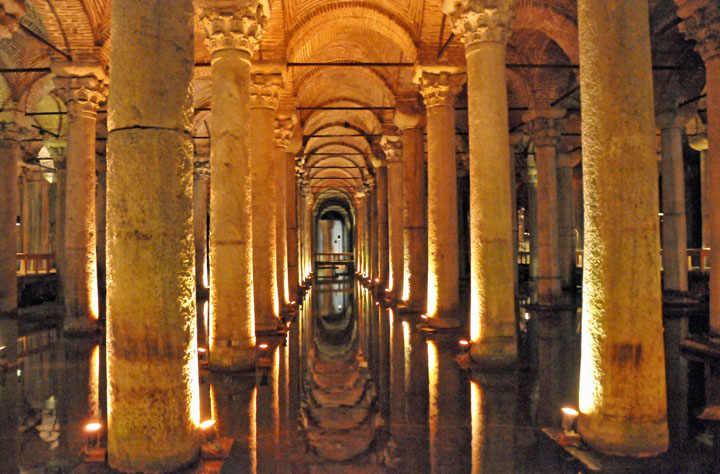
After the Western Roman Empire collapsed in the late fifth century, the Eastern Empire remained a center of culture and learning. When Justinian I became Eastern Emperor in 527 A.D., he set about adding to the grandeur of his capital in Constantinople, now called Istanbul. The magnificent church of Hagia Sophia was one of many enduring achievements of Justinian’s reign. Another was an underground reservoir built to supply water to what was then the world’s largest city, with a population of 500,000.
Reportedly built by 7,000 slaves, the Basilica Cistern, named for its location under the Stoa Basilica, is 453 feet long and 212 feet wide. Its 30-feet high ceiling is supported by 336 marble and granite columns arranged in 12 rows of 28, with each group of four columns supporting an arched cross vault. With 13-feet thick brick walls covered with water-resistant mortar, the reservoir could store more than 21 million gallons of water. The water, transported via aqueduct from a forest near the Black Sea, was distributed to Constantinople palaces and other buildings through a series of pipes.
The varying capital styles suggest that the columns were spoliated from pagan temples around the Empire. Two columns in the northwest corner are supported on stone pedestals bearing the carved image of snake-haired Medusa, one upside down and one on its side. Some believe these orientations were intended to cancel out the effects of Medusa’s petrifying gaze, but exactly why such mythological features were placed in a structure commissioned by a Christian emperor remains a mystery. Another column bears an image of eyes and tears, said to memorialize the slaves who died during construction.
The Basilica Cistern was rediscovered in 1545 A.D. when people in Istanbul were observed fishing though holes in the ground. Today, 52 steps located a few hundred feet from Hagia Sophia lead down to a clean and lighted forest of columns, used for concerts and as a location for “From Russia with Love.” When you are in Istanbul, stop by the Basilica Cistern to see one of the reasons why history calls the emperor who ordered its construction “Justinian the Great.”





